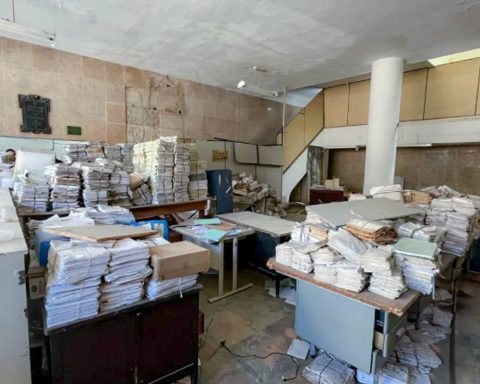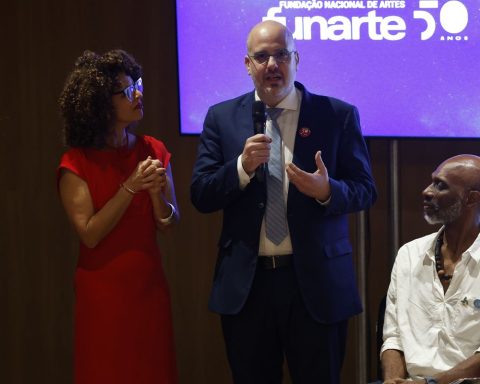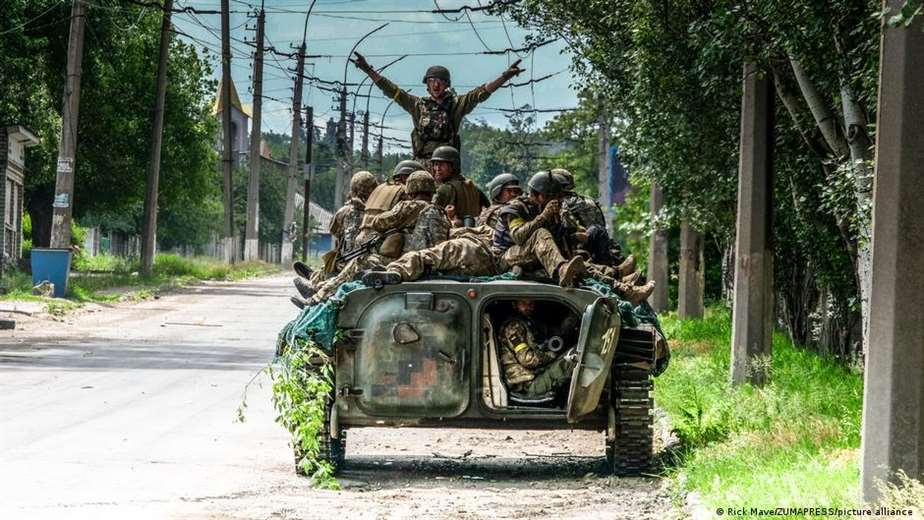In evaluation of the works of Station 14-Bis of Line 6-Orange of São Paulo subway, central region of the capital, traces of an archaeological site were found about 3 meters deep. The Acciona group, responsible for the works, informed that the fact generated the need to prepare a rescue project that would allow the investigation of these findings.
Hired to carry out archaeological research on the ground, as part of the Environmental Licensing process for Line 6-Orange, the consultancy company A Lasca sent this rescue project to the Instituto do Patrimônio Histórico e Artístico Nacional (Iphan), according to the group. Iphan informed that it awaits a final report from the consultancy on the conditions at the site.
“According to the report, the objects recovered from the archaeological site may be part of the collection of the São Paulo Archeology Center, linked to the Department of Historic Heritage of the Municipal Secretary of Culture, or alternative exhibitions will be identified together with the community of surroundings, in order to guarantee the right of access and knowledge of the material found”, said, in a note, the Acciona group about the document.
Acciona said that the continuity of the construction stage was authorized with the execution of the retaining walls of the site, necessary as a security measure so that the archaeologists can start the excavation and the continuity of the works maintains the integrity of the cultural heritage.
According to IPHAN, along the excavations of the Orange Line 6 of the Metro, contexts of historical occurrences were diagnosed through archaeological methodology and that technically were called archaeological sites of historical interest “that have the context and origin of societies of historical and historical period”. , in the case of Sítio Saracura-14 Bis, vestiges of the population in the city of São Paulo in the mid-20th century, a historic landmark of resistance in the city”.
The institute reported that, according to a source of an archaeological research project in progress by A Lasca, in the 19th century this region was home to one of the first quilombos in the city of São Paulo, the Quilombo da Saracura, the place also being called Quadrilátero Negro or Saracura. . The information shows that initially the place must have served as a place to rest on the escape route for enslaved black people and that today it still has in its landscape signs of the presence of Afro-descendant culture, such as the Vai-Vai samba school.
“However, regarding the material that emerged in the archaeological prospecting phase, according to the source of the aforementioned research, it consists of archaeological material from more recent times such as crockery, glass, coins and, according to the current phase of research, the data obtained through the interventions carried out in this area, they suggest that, in general: “the landfill layer is present in all the investigated areas. Saracura’”, says a note from Iphan.
According to the institute, the traces diagnosed so far have a more recent origin as a result of the grounding of the Saracura stream carried out in the early 20th century, in the period of the beginning of the industrialization of the city, “in which the original context of the traces may have been disturbed. ”.
Finally, Iphan informed that Sítio Saracura/14 Bis-Estação is duly registered in the Integrated System of Knowledge and Management and that archaeological research is being carried out at the site by the authorized consulting company, hired by the interested party.
“All Brazilian archaeological sites have the same importance for Iphan. These are union assets that are treated through the same protection policies. Regarding the academic or social value, only the results of the most in-depth research can infer”, concluded the organ.
Lasca confirmed that, since mid-2021, it has been carrying out archaeological research on the ground and, at the end of April 2022, it received authorization from IPHAN for the emergency rescue of the Saracura Archaeological Site/14 Bis. From then on, deeper areas of the soil were excavated to define the region where the excavation of the archaeological site will be carried out.
The archaeological site was identified in the region where the Saracura stream passed, channeled and backfilled over time with sediments from other parts of the city. “It should be noted that, before the grounding, the place was Quilombo Saracura, one of the largest and oldest quilombos in the city of São Paulo and from which the Bixiga neighborhood originated. It is, therefore, a significant place of memory for the history of the city and for the original community of this occupation”, says a note from Lasca.
In the 1970s, the consultancy states that “major urban transformations generated significant changes in the topography of the land and burial of the original soil of the Quilombo”. In this way, the initial archaeological findings, that is to say less profound, present in reports sent to IPHAN originate from these landfills.
“As far as the ancient Quilombo da Saracura is concerned, material remains that could be directly related to the particularities of this context have not yet been found, which does not mean that the identified historical material cannot be linked to the daily lives of its occupants and descendants, already in the 19th century. XX. Furthermore, stating that more recent objects were found at the site as a result of grounding does not mean that the area does not harbor other types of objects – including those related to Quilombo Saracura”, evaluated Lasca.
According to the consultancy, the research in the area has not yet ended and one of the objectives of the archaeological rescue is to ensure that the operation of the enterprise does not compromise the information contained therein. “The next stage of the archaeological excavation activities needs to follow the schedule of the works, in order to avoid risks to the team and to the viability of the facilities of the future station, thus guaranteeing the safeguarding of the archaeological context without harming the installation of the station and placing jeopardize the safety of the teams involved.”
The City of São Paulo, through the Municipal Department of Culture (SMC), and the Department of Historical Heritage (DPH), reported that so far there is no procedure on the subject under analysis in the DPH/CONPRESP. The legislation determines that the municipality’s participation in archaeological sites is carried out after analyzes and findings carried out by the National Artistic Historical Heritage Institute (Iphan).
“In relation to the archaeological site, it still needs to be analyzed, as well as the material to be studied, so that a plan can be drawn up. The material from the archaeological excavations and prospecting stages will be under the custody of the São Paulo Archeology Center – DPH/SMC, in accordance with the legislation,” he said in a note.
The municipality added that the São Paulo Archeology Center is part of the National Registry of Guard and Research Institutions (CNIGP), established by Ordinance Iphan nº 196/2016 and maintained by the National Archeology Center of Iphan, being, therefore, able, to keep guard over archaeological collections arising from research projects.

















